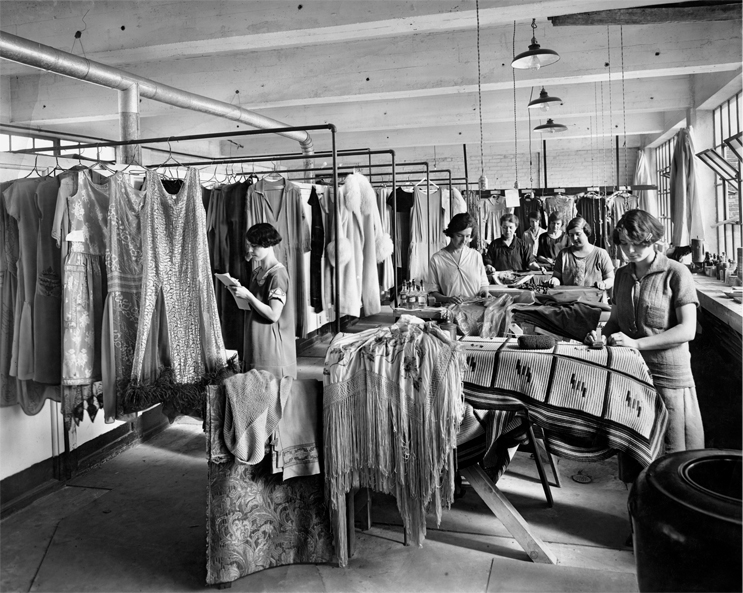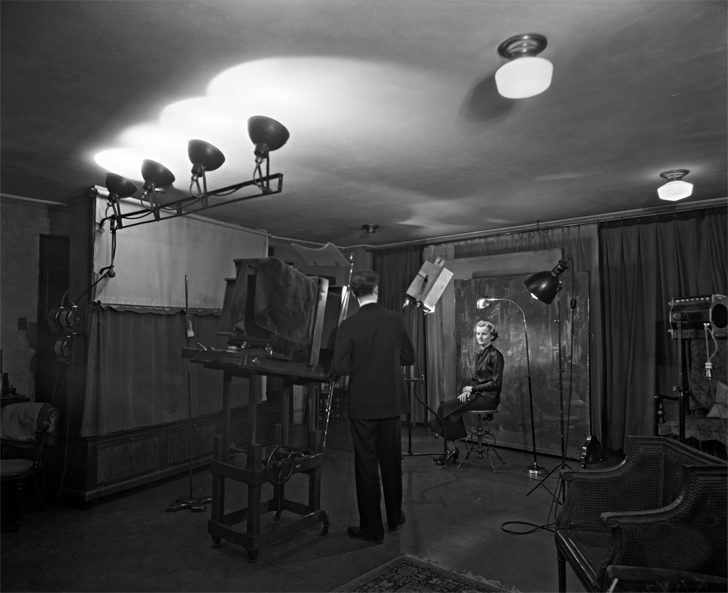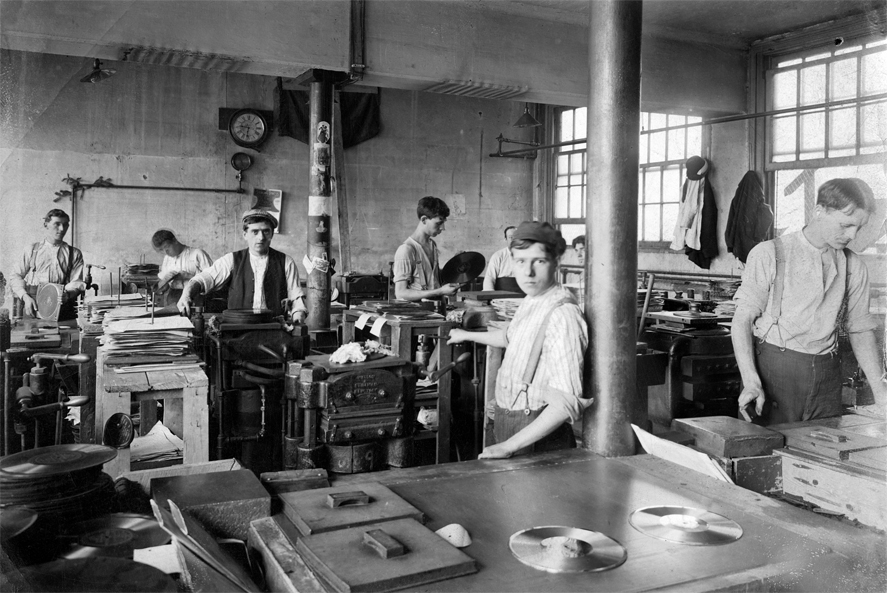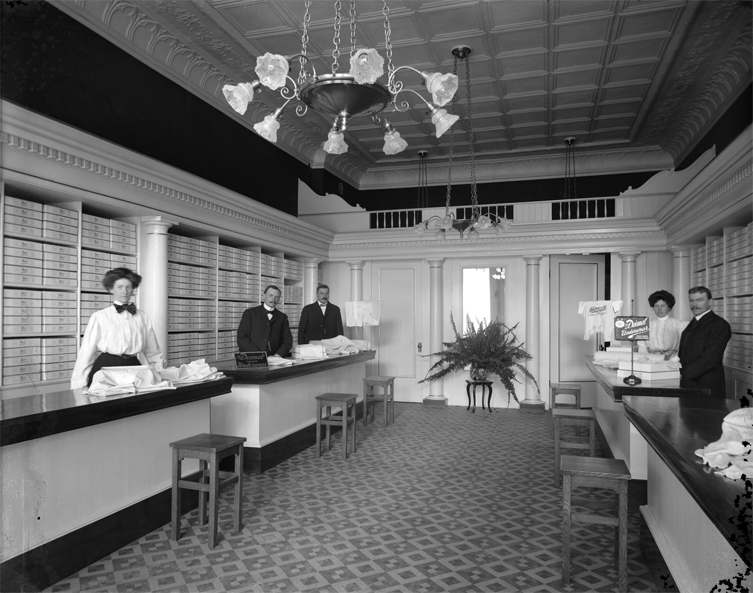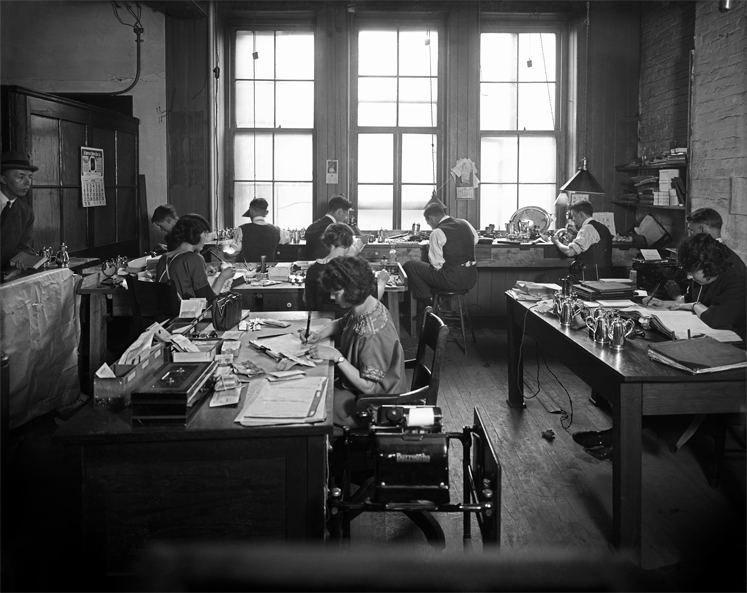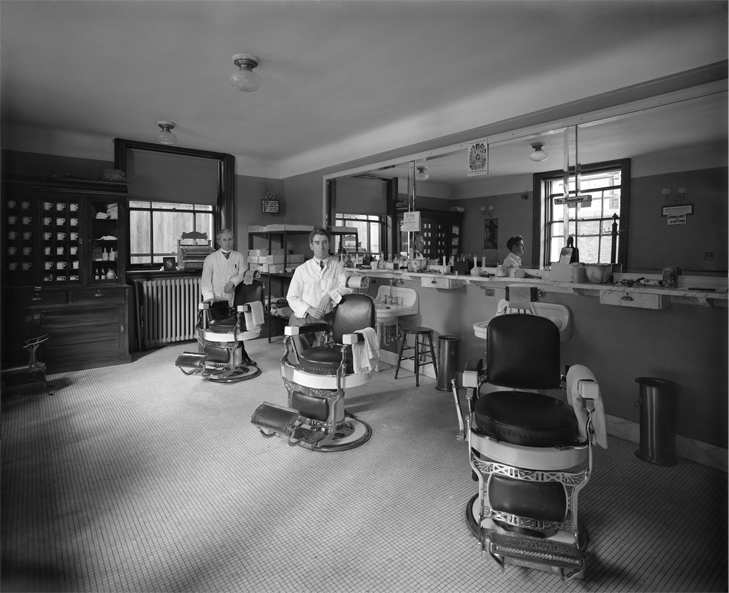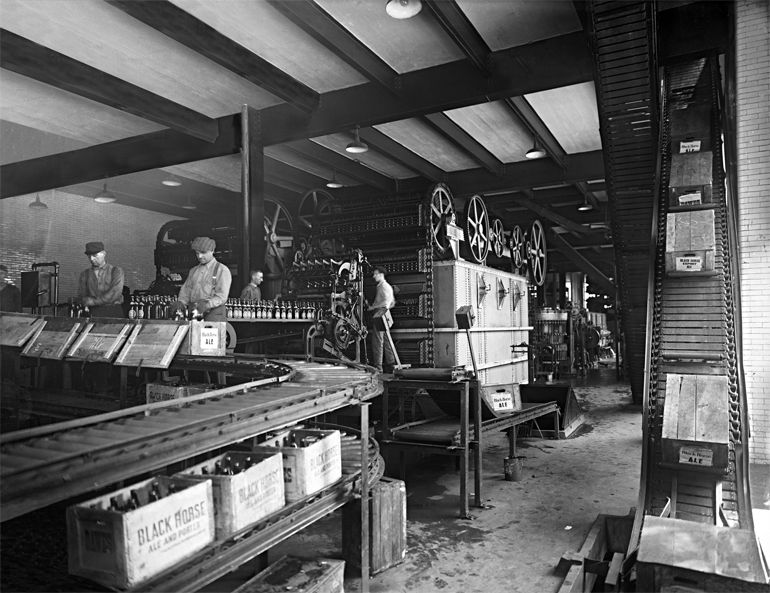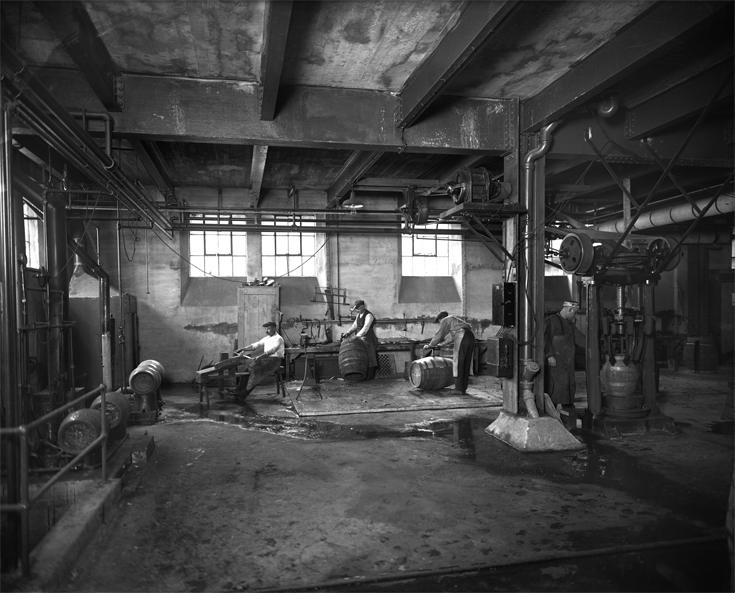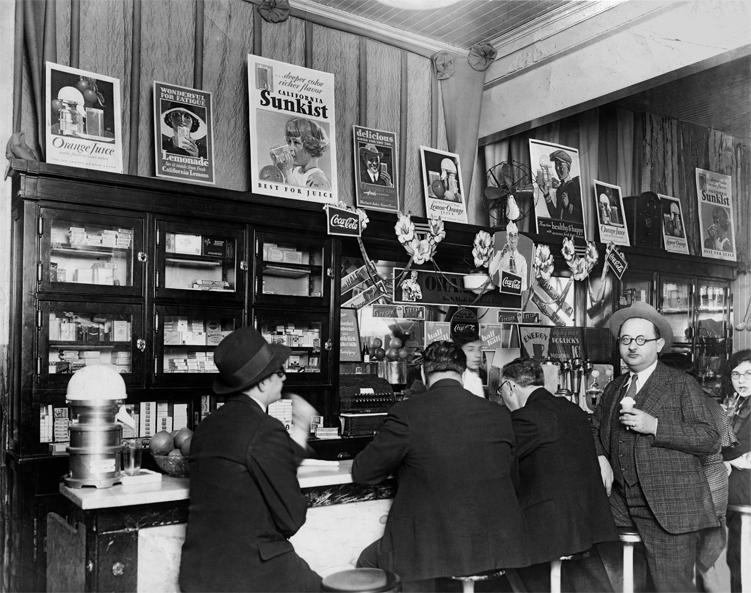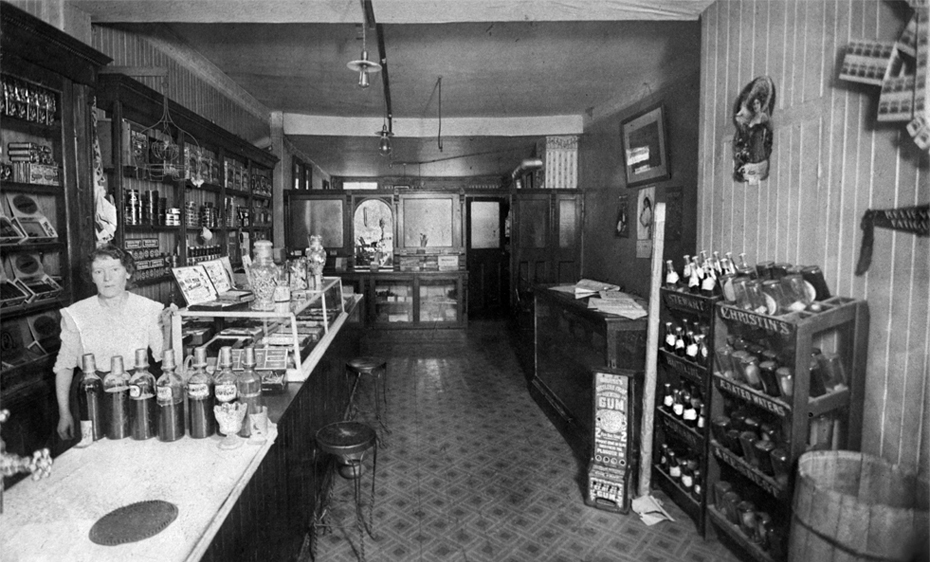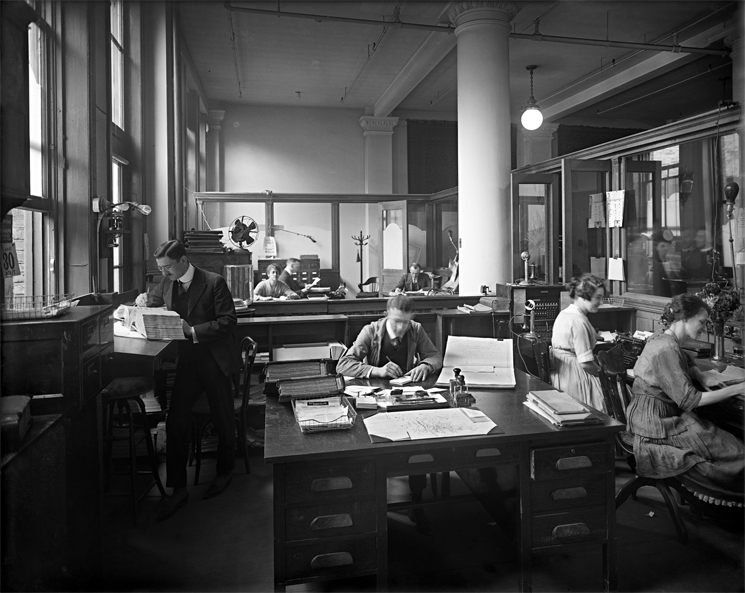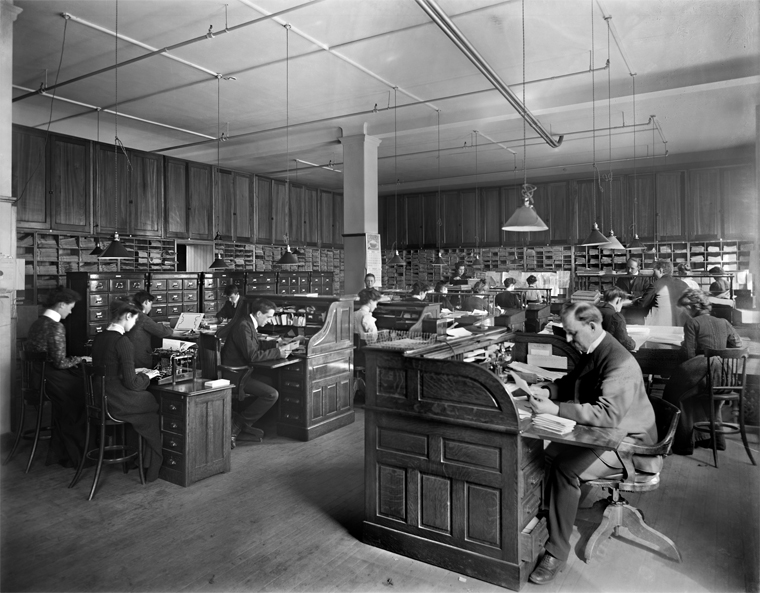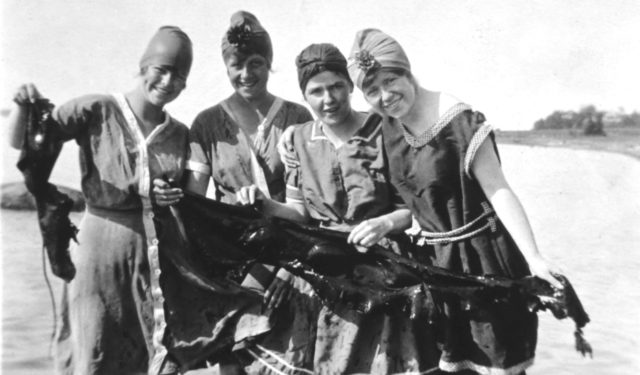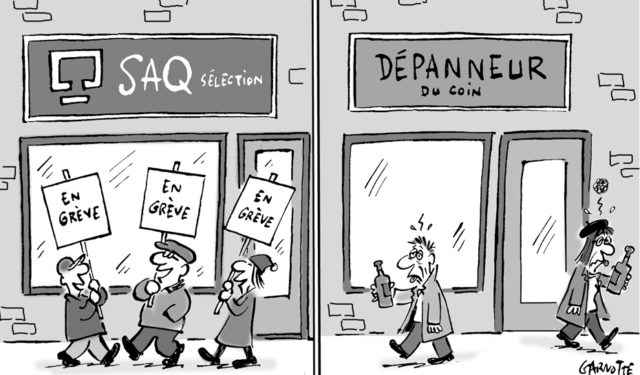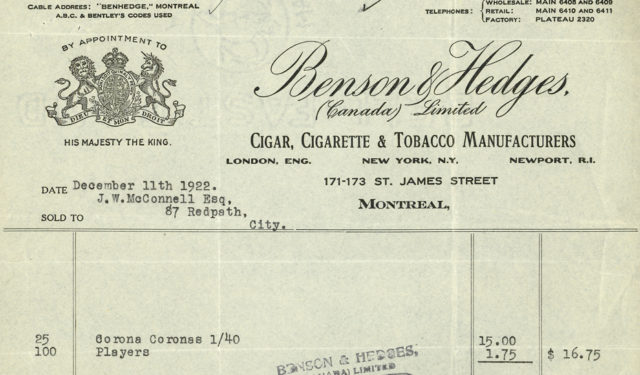Montreal at Work
A look at various Montreal workplaces in the early decades of the 20th century.
September 2, 2021
A number of photographs in the Museum’s collection picture establishments where Montrealers were employed during the early decades of the twentieth century, taking us back in time and offering glimpses of the settings and atmospheres in which men and women of the period earned their livelihoods. This incursion into workspaces of bygone days reveals that although some of the occupations illustrated still exist, work conditions have changed radically. The images also show how Montreal’s business activity was concentrated in the area that is now the borough of Ville-Marie.
Dechaux Frères Limitée offered cleaning and repair services for a wide range of items, including clothing, carpets and curtains. In this workshop reserved for special articles made of diverse materials can be seen several evening dresses, an embroidered shawl with a long fringe and a carpet. Each of the female employees appears deeply absorbed in her work: the firm was renowned for its high-quality care of luxury garments.
The photography studio first opened by William Notman (1826-1891) in 1856, in his house on Bleury Street, would continue to flourish as a family business under the founder and his sons until 1935, when it was bought by Associated Screen News. Dedicated essentially to portraiture, the Notman & Son studio would bear witness to evolving Montreal society for close to a century. A training ground for numerous photographers, the firm had a staff of fifty-five employees during the 1870s. This photograph of the studio from the 1930s, when it was being run by Charles Frederick Notman (1870-1955) – by which time the portable cameras pioneered by Kodak were widely popular among amateurs – reveals that studio portraits were still taken with a large plate camera on a tripod. A complex system of lamps has nevertheless replaced the natural lighting employed in the first studio.
The men pictured here worked at the Berliner factory located at 1170 Saint-Antoine Street, in the Saint-Henri neighbourhood. Their task was to operate the presses used to make records for gramophones. Emile Berliner (1851-1929), a German-born American, was the creator of this invention (1888), which made music accessible to a wide public. In 1899 Berliner opened a company in Montreal in order to ensure his exclusive right to manufacture and distribute the gramophone in Canada. That same year the company opened its first retail store, Berliner Gram-o-phone, on Sainte-Catherine Street West.
In this boutique located on Sainte-Catherine Street West, Dr. Henry Deimel sold his own brand of underwear for men and women. He claimed that the fabric called “linen-mesh,” of which the garments were made, allowed the skin to breathe more easily. In most clothing stores of the period customers were not free to examine the merchandise at will, as is the case today. It was the task of the salespeople working in this elegant boutique to show clients the articles contained in the boxes behind the counters.
For a fairly long period, from the 1850s to about 1940, it was common to have monograms or decorative motifs engraved on silver objects, either to identify their owner or to embellish them. In 1923 such Montreal firms as the Royal Silver Plate Co., Rubenstein Bros. and Henry Birks & Sons, which specialized in metal plating and silverware, all offered this service to their clients. This business activity declined over the course of the twentieth century.
This spacious barber’s shop was in the new downtown building of the Y.M.C.A. (Young Men’s Christian Association), constructed on Drummond Street in 1912. The organization offered a range of services focusing on the educational, moral and physical development of young men, and the building also housed a library, a bowling alley, a billiard room and a dining room, as well as washrooms with showers and bathtubs.
The Dawes Brewery was one of Montreal’s first. Founded in 1826 by Thomas Dawes (1785-1863), it was located on the banks of the Lachine Canal and had offices on Saint-Paul Street West. The business was run successively by four generations of the Dawes family. In 1909 Norman James Dawes (1874-1967) created National Breweries Ltd., a consortium made up of several independent breweries The beer produced by the Dawes branch was called Black Horse, in honour of the splendid black Percherons that the family bred. Keen horse enthusiasts, the Dawes ran their own stables and used horses to deliver their beer.
Among the Dawes Brewery’s various Lachine facilities was a cooperage for making barrels. This process involved several steps, including the initial shaping of the rough oak staves and their subsequent bending, to give the barrel its curved shape. One of the workers seen here is executing a final stage: the boring of the bunghole. At the time the photograph was taken, the Dawes Brewery was part of National Breweries Ltd., along with another leading Quebec beer maker, the Dow Brewery, which would lend its name to the consortium in 1952.
Shap’s Soda and Lunch was owned by Bernard and Beatrice Shaposnick, Russian-born immigrants whose first business venture, opened in 1923, was a small store on St. Lawrence Boulevard that sold tobacco products and candy. Business boomed, and they opened this popular lunch counter, whose menu included orange juice, sodas and ice cream.
This snack bar, run by Fanny and Ben Kravitz, was the ancestor of the famous Bens De Luxe Delicatessen, on De Maisonneuve Boulevard, which offered smoked meat sandwiches with mustard and pickles twenty-four hours a day. The Kravitz family ran the business until 2006. Like a number of other immigrants from Eastern Europe, Fanny and Ben first set up shop in their own home, located on St. Lawrence Boulevard.
Cabinetmaker Honoré-Paul Labelle (1852-1940) completed his commercial studies at the Collège Masson in Terrebonne. In 1888 he opened a furniture factory that would become extremely successful. By 1894 the firm, situated on Notre-Dame Street, would have a staff of close to ninety employees. In 1910 the business moved into a seven-storey emporium that Labelle had built on Sainte-Catherine Street East.
Here, the photographer has pictured the office of Canada’s first advertising agency, founded in 1889 by Anson McKim, in Montreal. The firm’s employees, many of whom were women, worked during this period in premises at 165 St. James Street, in the city’s business district.


